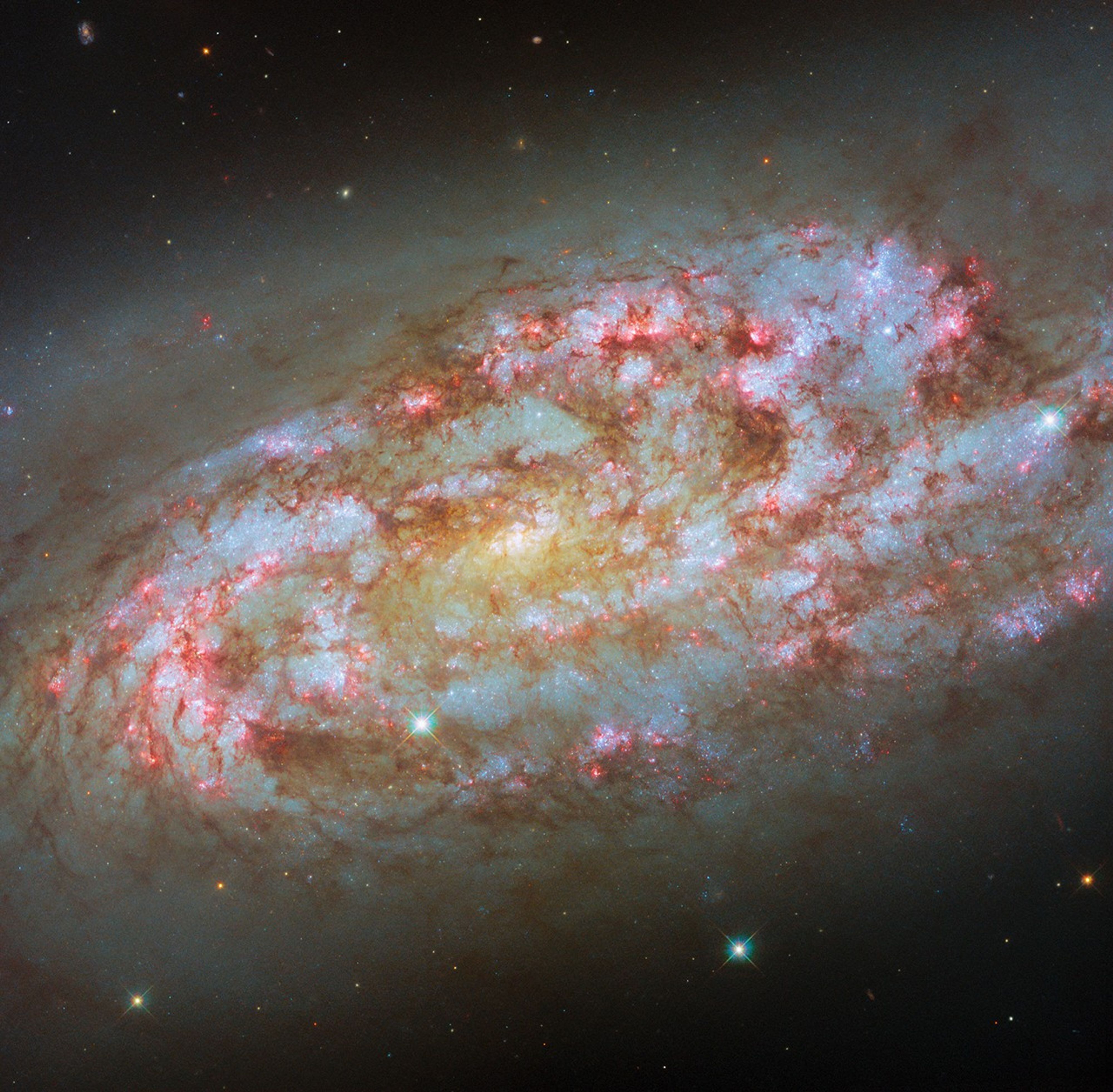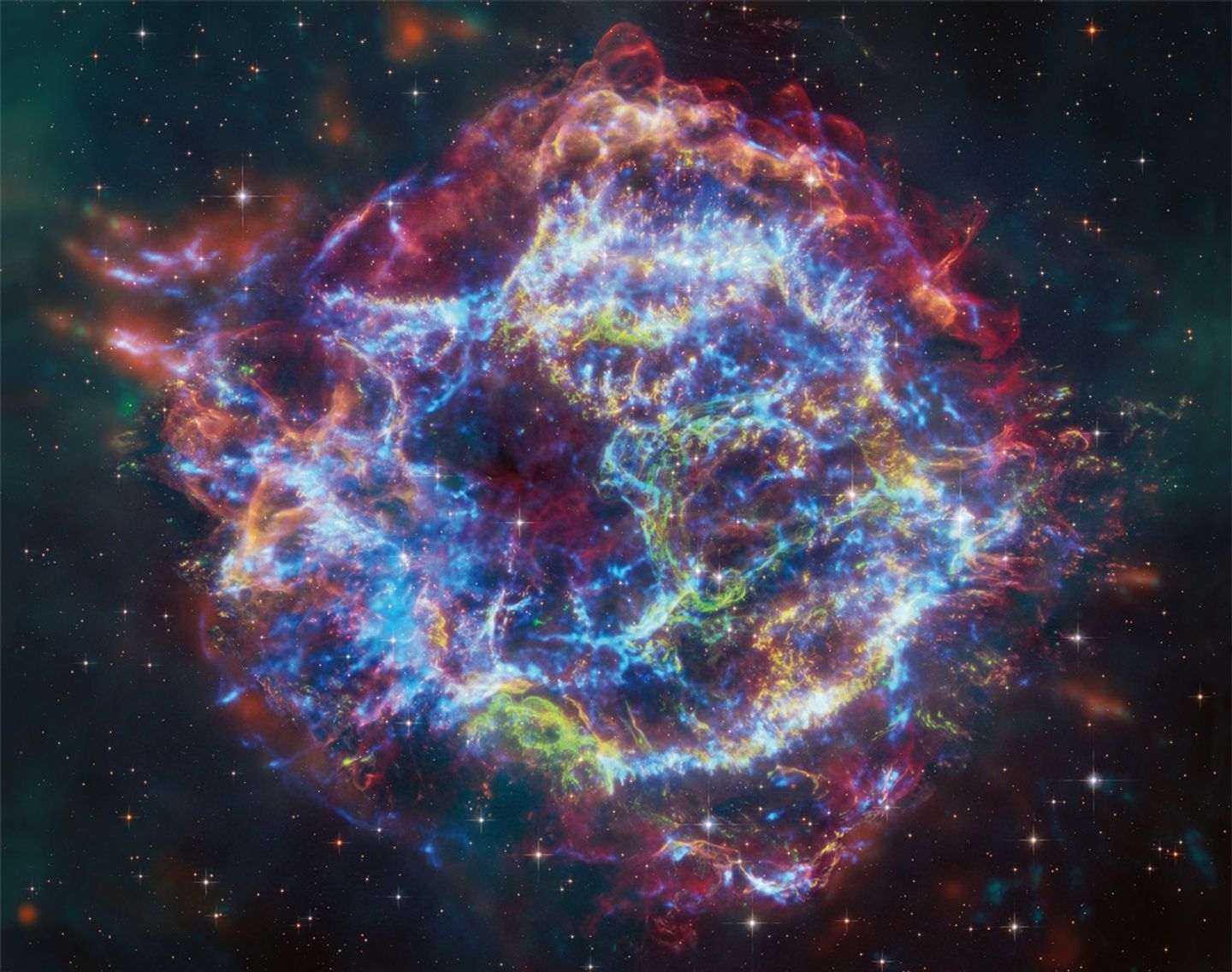UGCA 307 hangs against an irregular backdrop of distant galaxies in this image from the NASA/ESA Hubble Space Telescope. The small galaxy consists of a diffuse band of stars containing red bubbles of gas that mark regions of recent star formation and lies roughly 26 million light-years from Earth in the constellation Corvus. Appearing as just a small patch of stars, UGCA 307 is a diminutive dwarf galaxy without a defined structure, resembling nothing more than a hazy patch of passing cloud.
This image is part of a Hubble project to explore every known nearby galaxy, giving astronomers insights into our galactic neighborhood. Before this set of observations, Hubble investigated almost three quarters of nearby galaxies in enough detail to spot the brightest stars and build up an understanding of the stars populating each galaxy. This Hubble project set out to explore the remaining quarter of nearby galaxies by taking advantage of short gaps in Hubble’s observing schedule.
This crystal-clear image was captured by Hubble’s Advanced Camera for Surveys (ACS), which was installed on the telescope in 2002 during Servicing Mission 3B. The ACS replaced one of Hubble’s original instruments, the Faint Object Camera, which was built by ESA.
Text credit: European Space Agency (ESA)
Media Contact:
Claire Andreoli
NASA's Goddard Space Flight Center, Greenbelt, MD
301-286-1940



































